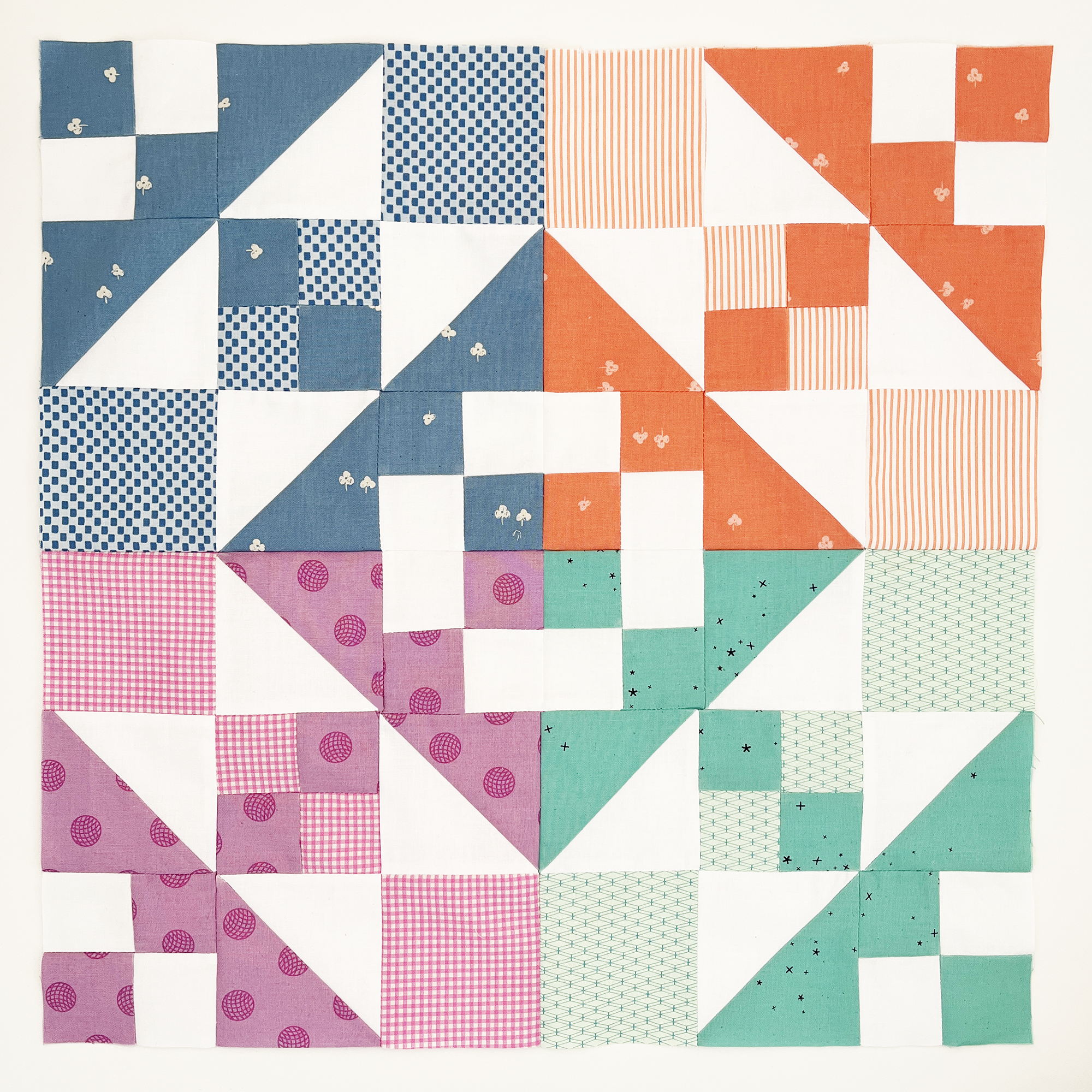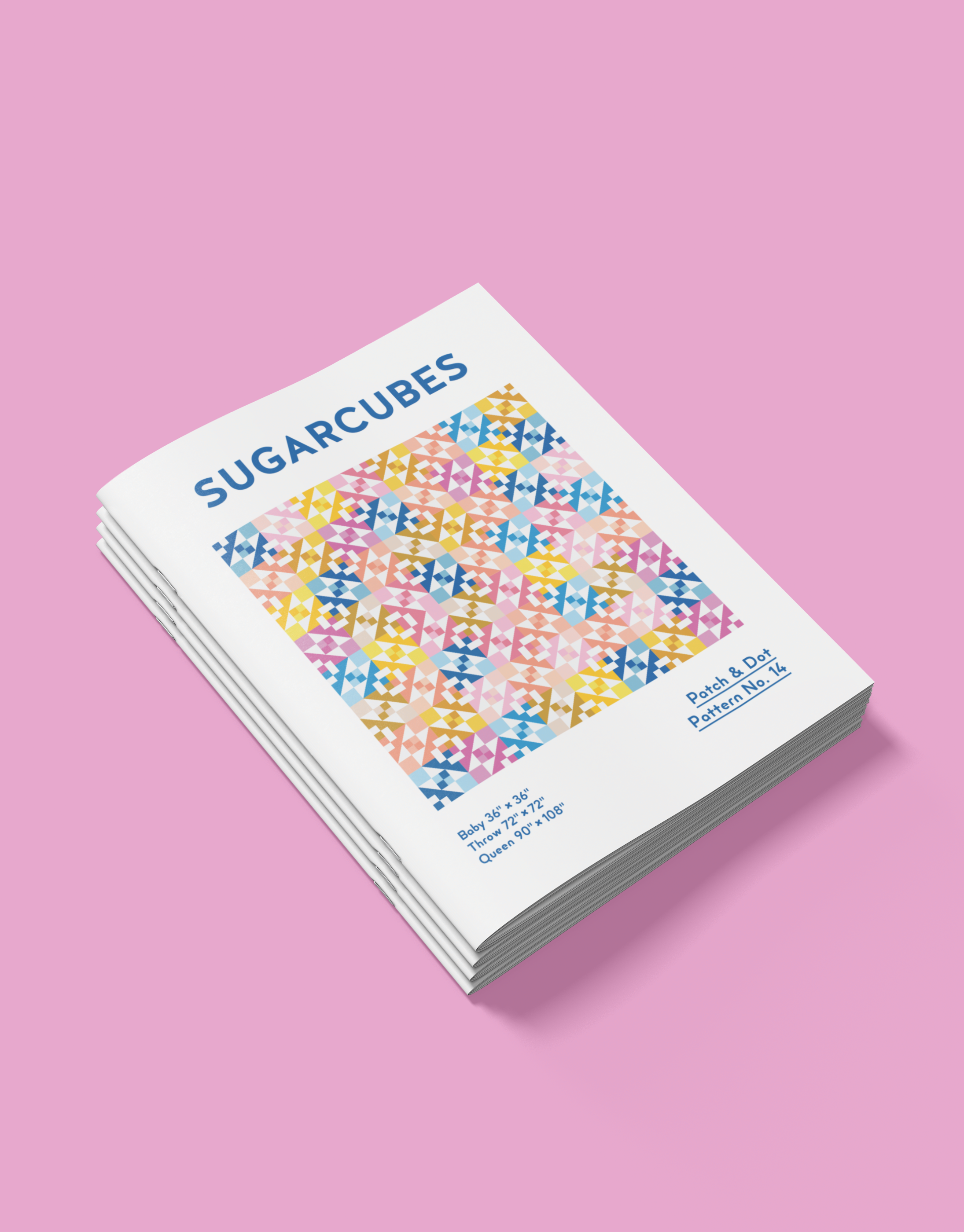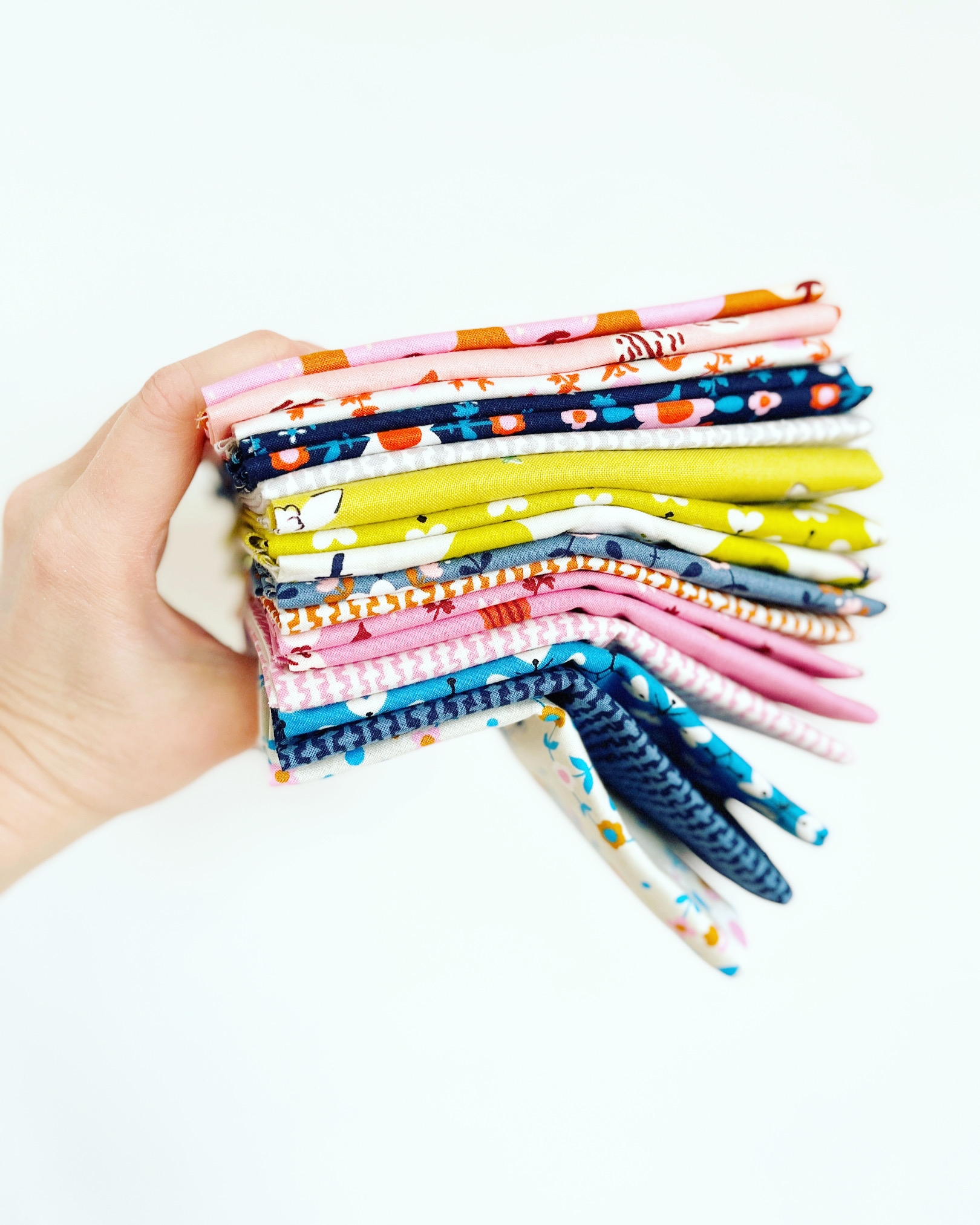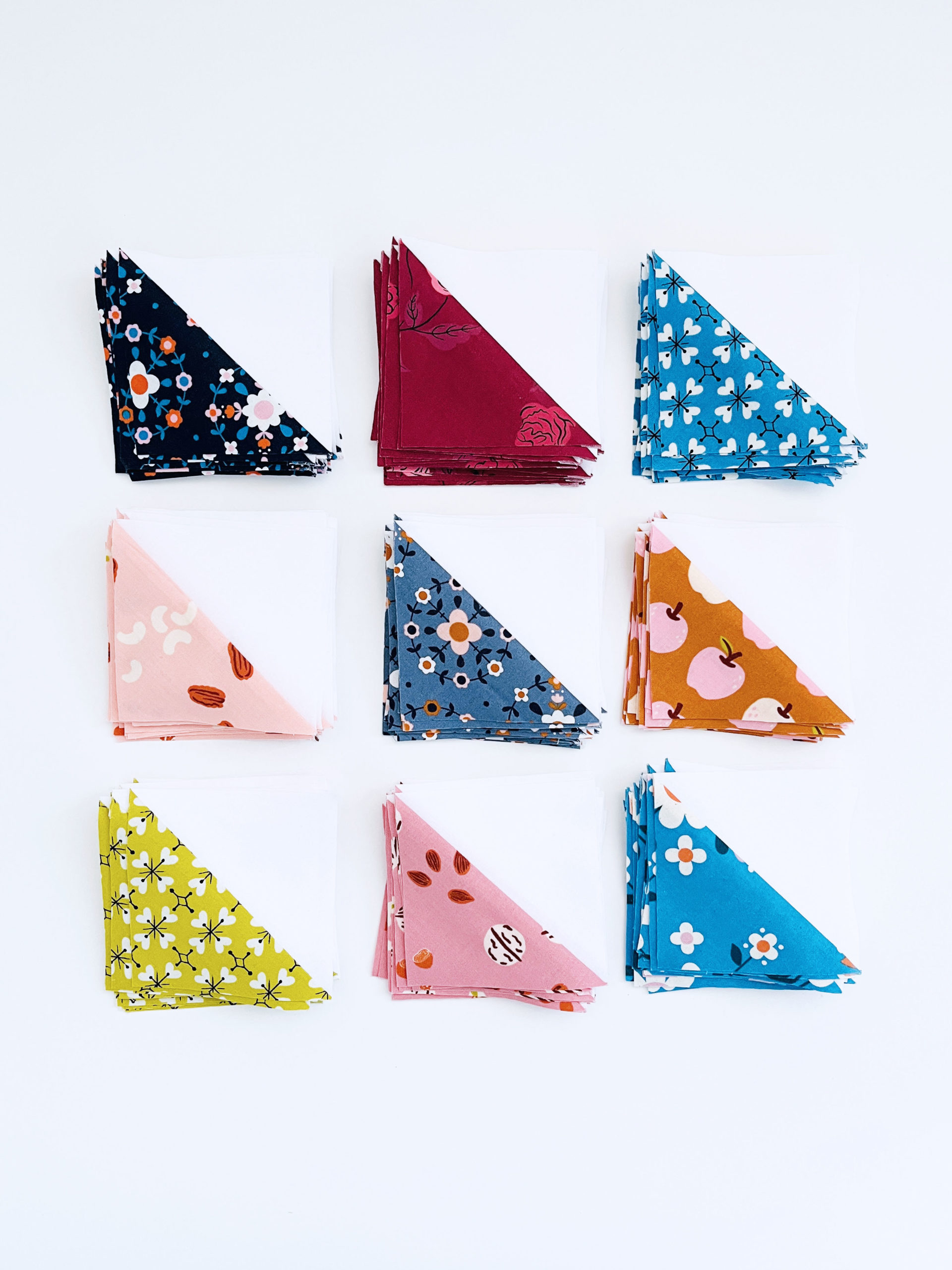I’ve been sewing so much this week I think I may have tweaked my ankle a little! That is a new one for me. I do have something to show for my efforts though: a little sneak peak of my new pattern, Sugarcubes.
It’s been edited and samples are being sewn as we speak. The release will be in early April, but here’s what I can tell you in the meantime:
- It’s a modern, low-waste pattern that’s fat quarter friendly.
- The block design is my twist on a classic quilt block, the Jacob’s Ladder. When combined with same-coloured fabrics of differing values, it creates a quilt with lots of visual movement.
- It will come in four sizes: Baby (36″ x 36″), Small Throw (54″ x 54″), Large Throw (72″ x 72″), and a proper Queen size (90″ x 108″).
- Skill level is intermediate, but if you are comfortable with 4-at-a-time half square triangles, this quilt will be no problem for you. (See the Resources section at the bottom of this post for a great tutorial by Shannon Fraser.)
- You can get the inside scoop on the Sugarcubes launch (which will include a special coupon, and maybe even a quilt along 😍).
My initial pull for the large throw size I’m working on consists mainly of this stack of Smol fat quarters by Ruby Star Society. I then mixed in some coordinating prints from previous collections (plus one solid!).
Below, the evolution of some HST blocks, which in this pattern are made using the four at a time method.
Choosing a sewing machine
I also wanted to share a great post by Kristin over at Woolly Petals, Sewing Machines: What is right for you. I shared a few words about my own personal machine, the Bernina 350 PE (Patchwork Edition). There are so many options when it comes to machines, and it really comes down to your own personal preferences and what you really need the machine for. For me, quilting is how I spend most of my sewing time, and I learned on a Bernina, so this was a no brainer for me. (Or should I say, for my husband, who got it for me as a birthday gift 🎁 .) It’s so interesting to get some other perspectives and insights on different machines, so I encourage you to pop over and give it a read!
[Singer]
Pictured above: not my Bernina! This was my very first sewing machine, a vintage Singer, that I got from a shop over on Lawrence Avenue in Toronto. I’ve always assumed from the number written on it that it came from a production environment.
Resources
How to make 4-at-a-time HSTs (plus math cheat sheet)





